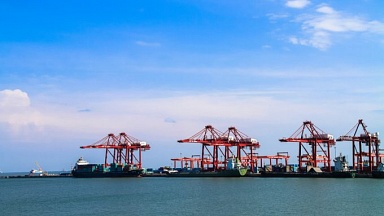It takes some logistics creativity and know-how, but there are many ways to cross continents with containerised cargo. «Against the background of the shocking events and the human tragedy currently taking place in Ukraine, we are trying to keep the supply Chain between Asia and Europe intact so that our customers in Europe and the rest of the world get their necessary supplies delivered», Nunner mentioned.
Bypass route
The route established largely follows the Middle corridor: from China to Kazakhstan, over the Caspian Sea to Azerbaijan and then through Georgia to Izmit and eventually Istanbul in Turkey. In Istanbul, the cargo is reloaded on a vessel again, this time to reach Trieste. From this Adriatic port city, the cargo finds its way to Duisburg.
«From Duisburg, our joint Duisburg — Amsterdam train takes over for containers (FCL ánd LCL) with final destination UK and other overseas destinations», adds Nunner.
Only viable option
The route via Turkey has gotten a lot of attention since the Russian invasion of Ukraine. More and more companies are choosing to avoid transit through Russia, either because they consider the route insecure or because they disapprove of the decisions taken by the Russian government.
However, the rail freight corridor between China and Europe more often than not includes transit through Russian territory. The Middle Corridor now seems to be the only viable alternative for those who do not want to deal with the Russian railways. The Southern Corridor, which runs through Iran and Turkey, is a third option, but as Iran is subject to US sanctions as well, there isn’t much interest in this route at the moment.
Middle Corridor
The Middle Corridor has been there for many years and has seen some growth, but is much less competitive compared to the main route (Belarus — Russia — Kazakhstan). This is because there are seas in between (Caspian Sea, Black Sea) and the rates are still relatively high.
From Turkey, the markets in Europe that are most easily reached by train are the southern European countries. For these countries, it has been more viable to opt for the Middle Corridor. Now that the main route is not a first choice for many, the Middle Corridor will also start to appeal to western markets, with different transport solutions possible from Turkey onwards.



